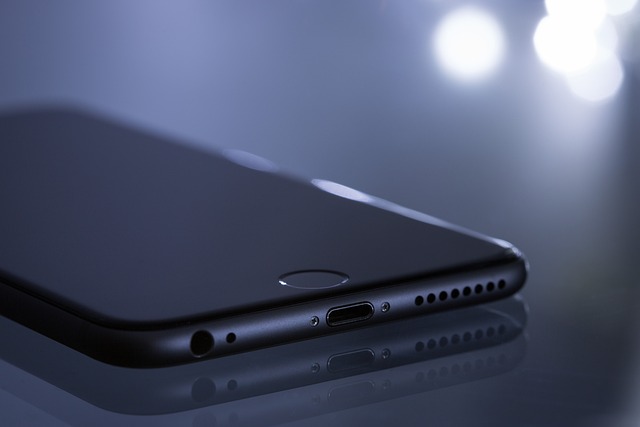If your iPhone is experiencing prolonged charging times, unexpected shutdowns or restarts, consistently reduced battery life, rapid discharge after minimal use, or frequent automatic shutdowns when the battery drops below 30%, it may be time to replace the iphone battery. These issues often indicate natural chemical aging of the battery, even with proper maintenance. A new iPhone battery should generally provide between 10 to 12 hours of usage under normal conditions, including tasks like internet browsing, email management, video playback, and phone calls. If your device fails to maintain this level of performance, seeking a professional service provider for a battery replacement is recommended to restore efficiency and ensure peak performance with current technology. Regularly monitoring charging patterns and addressing any irregularities promptly can extend the lifespan and functionality of your iPhone. Additionally, if you encounter system errors or unexpected shutdowns, these could be signs of reduced battery performance that necessitate a battery replacement to maintain device functionality and prevent data loss. Replacing an aging iphone battery is a common solution to enhance user experience and extend the device's operational life.
When your iPhone begins to show signs of battery distress, it’s a cue to consider replacing your battery. Ailing batteries can affect everything from performance to daily usage. This article outlines five critical warnings that signal your iPhone’s battery requires attention. From drastic battery life reductions to unusual charging patterns and system errors leading to unexpected shutdowns, these indicators can guide you on when it’s most prudent to replace an iPhone battery for optimal device functionality. Recognizing these signs early on can save you from further inconvenience and potential damage to your device. Understanding the nuances of battery health is key to maintaining your iPhone’s efficiency and longevity.
- Recognizing the Need for a Replacement: The Top Five Signs Your iPhone Battery Needs Attention
- Drastic Reduction in Battery Life: When It's Time to Say Goodbye to Your Current Battery
- Unusual Charging Patterns: What to Look Out For Before Deciding to Replace Your iPhone Battery
- System Errors and Shut Downs: How Unexpected Interruptions Indicate Battery Health Issues
Recognizing the Need for a Replacement: The Top Five Signs Your iPhone Battery Needs Attention

When your iPhone’s battery performance starts to wane, it’s often a sign that it’s time to consider a replacement. To determine whether your device requires a new battery, look out for these top five signs that indicate your current battery is not performing as it should. Firstly, notice if your iPhone’s battery drains quickly, especially after minimal use or when the charge percentage drops rapidly without apparent cause. This can be a clear indicator of battery degradation. Secondly, if your iPhone frequently shuts down on its own, particularly under 30% charge, it’s a strong signal that the battery’s capacity is diminished and needs to be replaced. Thirdly, an aged battery may struggle to hold a charge for the expected duration. If you find yourself charging your phone more often than usually required, it’s worth investigating a battery replacement. Additionally, if your iPhone experiences unexpected shutdowns or restarts, which can be a symptom of power-related issues, this too is a sign that a new battery might resolve these problems. Lastly, consider the age and condition of your current battery. If your iPhone’s battery is over four years old or you’ve noticed a consistent decline in its performance over time, replacing the battery can restore your device to optimal functionality. To avoid data loss, ensure to back up your iPhone before proceeding with a battery replacement, as this procedure typically involves resetting the device. For those experiencing these issues, a professional service provider can assess and perform a battery replacement, ensuring your iPhone operates efficiently with the latest technology.
Drastic Reduction in Battery Life: When It's Time to Say Goodbye to Your Current Battery

If you’ve noticed a drastic reduction in your iPhone’s battery life, it might be time to consider replacing the battery. While minor fluctuations in battery performance are normal over time, a significant decline often indicates that the current battery is reaching the end of its lifecycle. Typically, a new iPhone battery should last between 10 to 12 hours under moderate usage, which includes internet browsing, email, video playback, and phone calls. However, if your device struggles to maintain this level of performance or consistently requires charging multiple times a day, the battery’s capacity is likely compromised. This can be attributed to chemical aging of the battery cells, which naturally occurs even with proper care. Replacing an iPhone battery not only extends the usable life of your device but also ensures optimal performance and longevity. It’s advisable to act promptly when you observe such a decrease in battery life, as waiting too long could lead to further issues or even cause the battery to become unserviceable. Utilizing professional services or reputable repair centers can provide a high-quality battery replacement that will restore your iPhone to its peak operational state.
Unusual Charging Patterns: What to Look Out For Before Deciding to Replace Your iPhone Battery

When your iPhone begins to exhibit unusual charging patterns, it may be a sign that your battery is on its last legs and a replacement is imminent. Keep an eye out for symptoms such as prolonged charging times with a seemingly never-full battery or a battery that drains abnormally fast, especially after updates or heavy usage. If your device’s charging performance veers significantly from its usual behavior, it could indicate degraded battery health. Another red flag is inconsistent battery levels; for instance, if your iPhone’s charge percentage fluctuates wildly without apparent reason, this may also signal the need to replace the battery. These irregularities are often indicative of a battery that can no longer store or release energy efficiently. If you notice these signs, it might be time to consider an iPhone battery replacement to restore optimal performance and extend your device’s lifespan. Regularly monitoring your charging habits and being aware of these patterns can help you determine when it’s the right moment to replace your iPhone battery.
System Errors and Shut Downs: How Unexpected Interruptions Indicate Battery Health Issues

Unexpected system errors and unprompted shutdowns are often harbingers of diminishing battery health in iPhones. As the battery ages, its ability to supply consistent power can wane, leading to these interruptions during normal use. Such occurrences disrupt the user experience and can be indicative of a need to replace the iPhone battery. It’s crucial to pay attention to these signs as they may not only affect the functionality of your device but also its longevity. When your iPhone experiences frequent random reboots or errors, it’s a clear signal that the battery is underperforming and might no longer hold a charge as effectively as it once did. This can be attributed to the degradation of the battery’s cells, which over time lose their capacity to store energy. For optimal performance and to prevent data loss, considering a battery replacement becomes necessary when these issues persist despite standard troubleshooting steps.
When your iPhone’s performance dips and its battery behaves erratically, it may be time to consider a replacement. Persistent issues like significantly shortened battery life, irregular charging habits, and unexpected system errors or shutdowns are clear indicators that your device’s battery is on its last legs. Addressing these signs promptly by replacing your iPhone battery can restore both functionality and peace of mind. It’s a simple yet effective step to ensure your device remains reliable and efficient, allowing you to stay connected without constant interruptions or concerns about power loss. If you notice any of these red flags, it’s advisable to act sooner rather than later to maintain the optimal performance of your iPhone.
